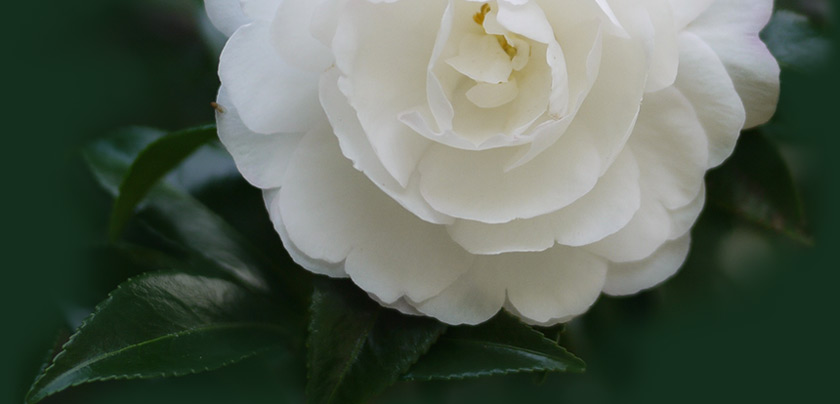Much has been said recently about the benefit of collecting seed from your favourite camellia and growing it. Care for it for a few years – and the catch here is that this could take a fair few years – and see how it flowers. Chances are that it will flower the same as the seed parent plant – but there is also a chance that the bees have done a fantastic job of cross pollination and you will end up with a distinctly different flower – and here you have a new cultivar.
This is how a number of the cultivars that we grow and love today have come into existence, and this is the way we will get new ones in the future.
Hybridisers will do deliberate cross pollination using a particular seed parent and using the pollen from a specifically different pollen parent with the objective of the resulting new flower having the best attributes of both parents. And – bazzinga – a new and highly desirable camellia.
BUT, the observation I want to make today is about seed raising a couple of species – camellia Crapnelliana and camellia Trichocarpa.
Crapnelliana is a small tree to about 8 metres with a large single white flower with a big boss of yellow stamens – and has the largest of all the camellia seeds.
We use the seeds to grow new plants as cuttings are rarely successful. The seeds fall to the ground at this time of the year – Autumn – we collect the fresh seeds which split open and collect the individual seeds from inside the thick pithy outer covering. We crack the hard covering of the seed, place in a pots ( we will put 20 or more into a community pot), cover with a shallow covering of potting mix, damp down, place in a shaded spot, keep moist, and wait a few weeks for the shoots to appear. We then prick out the new seedlings, snip the tip off the root pedicle (to promote lateral root growth), pot up, and watch them grow.
If we leave the seeds on the ground, the outer pithy husk dries up and the seeds go back into the soil as mulch.
In July last year, we visited camellia collector and hybridiser, Bob Cherry, and he graciously showed us around his garden full of camellias (and magnolias, wisterias, poppies, polyanthus and lots more) – in the hinterland just west of Sydney. The weather was cold – colder than what we left on the Sunshine Coast. There are many hundreds of camellias in his garden, certainly one of the most extensive collections of camellias in Australia. But the one I single out here is the species Trichocarpa.
The seed of Trichocarpa is a large pod, somewhat smaller than that of Crapnelliana but a good tennis ball size. We collected seed with the intention of growing them on on our return to Palmwoods. Where these seeds had fallen, the ground was moist, the pithy husks were wet and crumbly (almost like peat) and the seeds sat in this environment, leaves falling onto them and partially covering them. We collected a bunch complete with the pithy outer husks and debris, whacked them into a bag and we are pleased to say that we have a few seedlings growing. I am very hopeful that these will survive, because I love this flower and the tree.
In my subsequent musings, I had a thought – these seeds were sitting in natures own seed raising mix. I thought that these seeds were being kept moist and the pithy husk provided a perfect medium for the new roots to grow into. These seeds would shoot their root into the husk, the new leaf shoot would pop up into the sunlight, and the root would continue down into the soil – and hey presto, a new tree in the little forest of Trichocarpa.
SO why is it, that back in Palmwoods, our Crapnelliana seeds fall to the ground, split – all good so far – then dry up and go hard and become mulch? Simple – we have hot wet summers and cool/cold and dry winters. When the seeds fall to the ground, the weather is dry – the seeds dry out and that is the end of the seed. It becomes just a small amount of mulch.
I happened to be in the garden yesterday – surprise – and I saw, under one of our Crapnelliana trees, a number of old seeds. Closer inspection revealed that one of these seeds had fallen into a spot where it had kept moist and a seed had in fact put a root down into the husk and a leaf shoot had grown to about 8cm. It had then dried out and died, and before I realised, the shoot broke off in my fingers. The husk that the root had gone into was moist and fibrousy and could be easily broken up with my fingers. You could still see the roots where they had grown into the husk.
I was pleased. Mother nature is a wondrous thing.
The fact is that we are growing plants in weather that is probably different to that in their native environments and we need to make allowances for that. We need to replicate as well as we can the conditions the plants need and in most cases, with our camellias, we can grow them very successfully.
Our weather is very different to that in Sydney/Melbourne with our hot wet summers and cool/cold dry winters, where southern states (in Australia that is) are ofter wetter in winter. This will mean that our flowers can dry out more quickly, so we must remember to keep a little bit of moisture to them – but not too much.
Gardening is so much fun.








